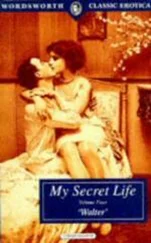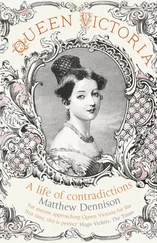Having been widowed in 1838 (when Oswald was only ten), Johann Jürgen seems to have done everything to encourage his only child’s artistic career. The young Oswald Adalbert showed precocious ability. In 1844, at the age of sixteen, he won a travelling scholarship to Copenhagen to study at the art academy. Once there, he revealed an independent spirit, abandoning the school’s classes after his first term and taking private tuition in ‘perspective drawing’ from the foremost Danish painter of the day, C. W. Eckersberg. He then devoted himself to working in the cast gallery for the whole of the following year. In 1846 he abandoned Denmark for the altogether more prestigious Academy at Munich. 53
Oswald Sickert stayed in the Bavarian capital for the next six years, submitting himself to the rigours of the Germanic training system. He was supported by his father, who visited him on at least one occasion and encouraged him with regular letters. Each epistle ended, ‘somewhat … to his son’s irritation’, with the imprecation – the distilled essence of old Johann Jürgen Sickert’s artistic wisdom – ‘male gut und schnell’ (paint well – paint quickly). 54 But Munich for all its virtues and opportunities had one great limitation: it was not Paris. The main drama, it was felt, was happening elsewhere. The students of Munich were alive to the new currents in French art; and in 1851 they even got a chance to view some of Courbet’s work at first hand when he exhibited in Munich, and perhaps even visited the city. 55 Oswald Sickert and his companions soon came to idolize this new master. 56 And the impact of his work prompted many of them to move to the French capital. In 1852 Oswald Sickert joined the exodus, enrolling at the Parisian teaching-studio of Thomas Couture. 57
Couture was, and remains, famous for his depictions of Classical Rome. His monumental canvas, Romans of the Decadence , was the cynosure of the 1847 Salon and was bought by the Louvre. But despite his antique themes, he allied himself closely to the contemporary strains of artistic Realism. His depiction of the dissolute Romans had been intended – and taken – as a comment on the corruption of France under Louis Philippe’s rule. He retained a reputation as a radical and independent spirit and his studio was regarded as one of the most exciting in Paris. It attracted students from all over Europe, and from America too. They found Couture’s regime both liberating and challenging. His manner had a bracing informality, very different from that of other teachers. He startled more than one student with such direct criticisms as, ‘That’s horrid! If you can’t do better than that you had better stop!’ 58
Although he worked within the framework of tradition – the ‘good tradition’ of la bonne peinture that Sickert later described as being ‘sedulously nursed’ in that Paris of the 1850s – Couture was always open to the possibilities of new techniques and procedures. 59 To young artists like Oswald Sickert who arrived from the rigorously exacting art academies of Germany, such an approach was electrifying. One young artist who came to Paris from Düsseldorf considered Couture’s teaching ‘a sublime reaction from the dry-as-dust German painting then in vogue’. 60 Another thanked Couture for freeing him from ‘the niggling technique of the Germans’ as well as opening up his compositions to a much ‘broader vision & conception’. 61 It was Paris that liberated Oswald Sickert. And although he was there a relatively short time (barely a year) it was, for him, a defining artistic experience: he came to regard himself as ‘more an antique Parisian than a Dane’ – or, indeed, a Bavarian. 62
But of course, as in most educational establishments, it was the other students – and the place itself – that provided the real education. Oswald Sickert found himself in an exciting milieu. In Paris he had the chance to see more of Courbet’s pictures. 63 He travelled in France, and discovered Dieppe as a sketching ground. 64 He mixed with art students not only from Couture’s atelier but from the other studios as well. There was a strong Munich contingent, including Wilhelm Füssli, Moritz Delft and Cesar Willich, as well as others from Altona, including – from 1853 – Johannes Schumacher. 65
It was Schumacher who, on one of their return visits to Altona, introduced the 24-year-old Oswald Sickert to the family houseguest, Eleanor Henry. 66 The Eleanor he met was an accomplished young woman of twenty-two, vivacious, attractive, and with beautiful fair hair. Oswald Sickert, for his part, was touched with the metropolitan glamour of Paris. He had a fine beard and, despite a retiring manner, seems to have been considered rather a dashing figure by the young ladies of Altona. (Preserved amongst his papers is one letter from an admirer – not Eleanor Henry – who addressed him with more poetic ardour than geo-political exactness as ‘Dear German Lord Byron’. 67 ) It was not, however, his romantic looks, nor even his fledgling artistic reputation, that seems to have drawn Eleanor Henry to him. It was music. They shared a common passion. Oswald Sickert played the piano with real sensitivity and skill. According to one exacting critic, his ‘technique was faulty, but his phrasing was musicianly, and … for passion and for singing quality in cantabile passages he excelled many public performers’. He had a strong sense of rhythm and was a ‘brilliant’ sight-reader. 68 Eleanor, the dancer’s daughter, had her own sense of rhythm and allied it to a beautiful singing voice. Their romance flourished to an accompaniment of Schubert lieder.
Even amongst the romantically inclined young people of Altona, however, it was recognized that Eleanor’s social position was problematic. Although the exact details of her background remained vague, it had become known that she was illegitimate. This, to the conventional mid nineteenth-century mind, was an all-but-ineradicable stain, a bar to any full social acceptance. But to the young Oswald Sickert, brought up in the world of art, schooled in the studios of Copenhagen, Munich, and Paris, such considerations counted for little besides the more real attractions of Eleanor’s character and person. 69 He was happy to overlook the supposed taint. *
Oswald was more concerned that Eleanor’s guardian might not favour the suit of an as yet unknown Danish artist for the hand of his ward. There were, however, encouraging signs. Johannes Schumacher – himself quite as unknown as Oswald Sickert – had fallen in love with another member of Altona’s international colony, an English girl called Annie Williams. He wanted to propose to her but had received no encouragement from Mr Williams, who insisted that Johannes first prove he was capable of supporting a wife. Johannes had sought Richard Sheepshanks’ advice on the matter and had been much heartened by his tone of encouragement. It was a tone backed up with practical assistance. Sheepshanks commissioned a picture from his young friend and sent him a cheque for £100. 70 This positive attitude towards the romance of one impecunious painter and an English girl with prospects must have given Oswald Sickert some small grounds for optimism.
That optimism was soon tested. In the summer of 1855, Richard Sheepshanks announced that he wished to take Eleanor on a tour of France and Italy. They would travel together with his sister Anne. Eleanor, however, was to meet her father at once in Paris. It was the news of her imminent departure from Altona that precipitated Oswald Sickert to declare his love. He proposed and was accepted. Eleanor was touched not only by the earnestness of his suit but by his willingness to overlook her doubtful status. Nevertheless, she must have had some doubts about how her father would take the news. The engagement was not disclosed. She travelled to France with it as a secret. 71
Читать дальше












